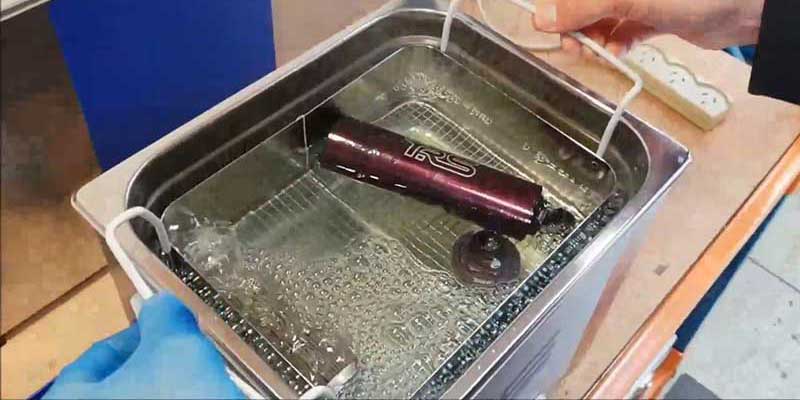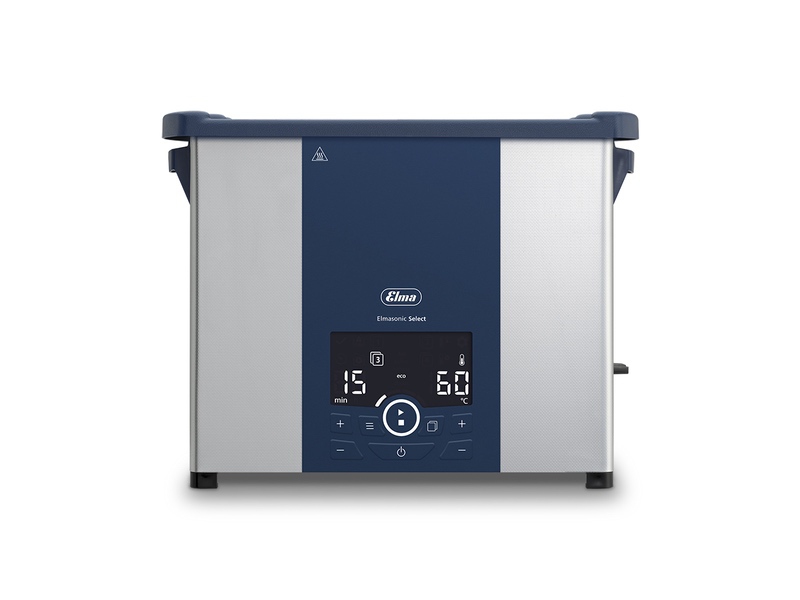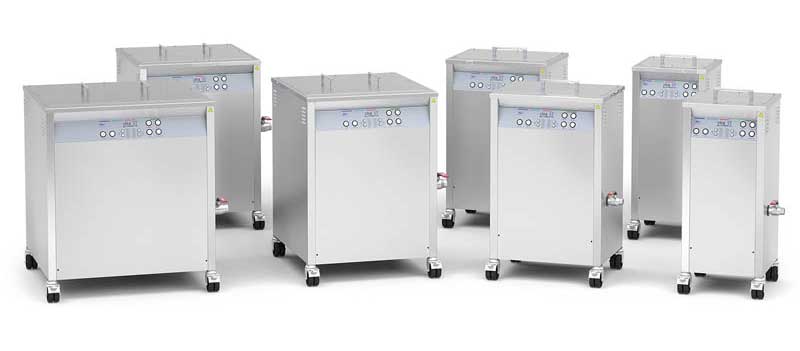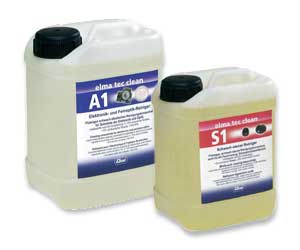
Ultrasonic Parts Cleaner Specification Tips
According to a Grand View Research report the growth in the ultrasonic parts cleaner market “is primarily attributed to the rising demand for precision cleaning within sectors like electronics, healthcare, and automotive manufacturing.” This is due to ultrasonic parts cleaning’s “capacity to deliver a comprehensive and consistent cleaning process that effectively removes contaminants, even from intricate and challenging-to-reach areas.”
Two Key Components of Ultrasonic Parts Cleaning
But first, if you are not familiar with ultrasonic cleaning we suggest you take a few minutes and review our post on how ultrasonic cleaners work.
When specifying an ultrasonic parts cleaner two considerations apply: The ultrasonic cleaning unit and the cleaning solution chemistry. This post covers both topics.
Specification Tips for an Ultrasonic Parts Cleaner
Ultrasonic cleaners are available in various cleaning tank capacities and dimensions. You’ll need to accommodate the largest parts you’ll be cleaning. Keep in mind that your parts must be completely immersed in the ultrasonic cleaning solution chemistry.
Also remember that cleaning is usually accomplished in baskets, the dimensions of which are slightly smaller than tank dimensions. Large parts may be suspended in the cleaning solution – in which case care is taken to keep them from contacting tank sides and bottoms.
We’ll get more into this later in our post.
Useful Features for Ultrasonic Parts Cleaners
While all ultrasonic cleaners come with an on-off switch there are other features that may prove useful when you shop for your ultrasonic parts cleaner.
Here are some of the features you might want to consider:
- Timers let you “set and forget” the cleaning cycle, turning off the ultrasonic energy at the end of the cycle.
- Heaters let you set the cleaning temperature recommended by the cleaning solution manufacturer. Some units will start the cleaning when the set temperature is reached.
- A sweep mode provides a slight ± variation in ultrasonic frequency to avoid areas of too intense and no cavitation.
- A pulse mode provides bursts of higher energy to blast away more stubborn contaminants.
- A degas mode drives off cavitation-inhibiting trapped air from fresh cleaning solutions and is especially useful for large-capacity tanks. Pulse can also accomplish this.
- Dual-frequency cleaners allow you to select between a higher frequency for more delicate cleaning or cleaning highly finished surfaces, and a lower frequency for more intense cleaning.
- Adjustable power likewise lets you customize parts cleaning cycles to the tasks at hand.
Benchtop Ultrasonic Parts Cleaners
Benchtop ultrasonic parts cleaners are offered in several models.
An economical choice for the shop or lab is the Elmasonic E Plus line. Available in 9 tank sizes from 0.25 to 7.5 gallons, it offers a Dynamic mode for powerful cleaning, to degas fresh cleaning solutions or to mix, dissolve and disperse samples. An Eco mode provides gentle cleaning of sensitive parts. Sweep frequency with power tracking assures consistent uniform cleaning.

Additional features are offered in the Elmasonic Select line in 11 tank sizes from 0.7 to 23.5 gallons. It offers 5 ultrasonic modes to optimize parts cleaning, sample preparation, and solvent degassing. Operators can save 4 programs for quick call up and reproducible results. The extra large digital display keeps track of the cleaning cycle and signals when it is completed.
Total control of the ultrasonic cleaning process, including frequency, power level, time, temperature, and ultrasonic mode is offered by the dual frequency 37/80 kHz Elmasonic P line in 6 tank sizes from 0.8 to 7.5 gallons. The P line has higher average and peak ultrasonic power than any ultrasonic bath on the market. Select from 4 ultrasonic modes for cleaning, intense cleaning, dissolving and degassing.
For heavy-duty ultrasonic parts cleaning with a benchtop unit, we recommend the Elmasonic xtra TT units in 4 tank sizes from 0.79 to 4.8 gallons. These units are designed to operate continuously up to 8 hours. They feature continuous Sweep for uniform cleaning and a dynamic mode to remove tenacious contaminants with boost of extra power.
Large Ultrasonic Parts Cleaners
Tovatech offers a wide selection of floor mounted large ultrasonic parts cleaners. These are floor-mounted mobile units offering multiple features best explained in our post large ultrasonic cleaner specification tips. The post provides useful guidelines on what to look for in these ultrasonic cleaners and links to applications where they are put to use.
An Economical Ultrasonic Parts Cleaning Solution
As noted in the introduction to this post cleaning solution chemistry is an important consideration to help assure satisfactory results.
A widely used chemistry is biodegradable Elma tec clean A4 concentrate available in 2.5, 10 and 25 liter containers. Uses include removing grease, dirt, coolant, oil, dust, carbon, soot and wax from all metal parts including carburetors, engines and drive chains; newly machined or refurbished parts, and plastic, glass, ceramics, quartz and rubber components.
It is diluted to 2% to 5% with water, depending on the condition of the parts being cleaned. With proper bath maintenance it can provide a long service life before replacement is necessary.
Note that while this cleaning solution is biodegradable, always consult local authorities regarding proper disposal.
Other examples of cleaning solution formulations are found in our post how to select an ultrasonic cleaning solution.
Setting Up an Ultrasonic Parts Cleaning Procedure
As an example, we’ll use the 37 kHz Elmasonic Select series noted above and Elma tec clean A4. The Select series has features that contribute to the efficiency of the cleaning operation. These include a heater, a timer, a degas mode, and a dynamic mode combining sweep and pulse. Presented here is a typical procedure for using the A4 biodegradable ultrasonic parts cleaning concentrate. With experience you can modify it to suit your requirements.
- Fill the ultrasonic cleaner tank half way with water then add the proper amount of A4 cleaning solution concentrate for a full tank. Continue adding water to the fill line. Note that parts being cleaned will displace some solution, which can be set aside for later use. Tanks should not be overfilled or underfilled.
- Activate the unit and degas mode to mix and degas the solution. These steps must be taken each time a new batch is prepared. In about 15 minutes you are ready to clean.
- Place your parts in the basket in such a way that they do not contact each other. Lower the basket into the cleaning solution. Set the thermostat for 50⁰ to 80⁰C, the timer for 10 minutes, activate the dynamic mode to evenly distribute cavitation throughout the bath, and start the unit.
- Remove the basket and inspect the parts (caution – they may be hot). If satisfied let them flash dry; otherwise rearrange them and repeat the cycle.
If parts being cleaned must be spot free rinse them to remove cleaning residue from the surfaces. Depending on the degree of cleanliness you may want to use distilled or DI water for rinsing.
If rusting is a concern add 0.1% elma KS rust inhibitor to the cleaning solution for temporary corrosion protection. This inhibitor can also be used with a rinsing bath.
Maintaining the Ultrasonic Parts Cleaner System
Cleaning solution life can be prolonged by removing gross contaminants before the ultrasonic cleaning operation. During ultrasonic cleaning skim off and set aside material that floats to the surface.
When cleaning efficiency drops it is time to replace the solution. Drain it and dispose of it along with the skimmed off material in a locally approved manner. Following the owner’s manual clean the tank to remove films and potentially damaging particles that fall to the bottom. Prepare and degas a new batch and you’re ready to resume cleaning.
Need More Info on an Ultrasonic Parts Cleaner?
We’ve touched on important points but if you need more information on this topic, a good place to start is checking out our ultrasonic cleaner frequently asked questions.
Another good source of info if you are new to the topic is found in our ultrasonic cleaner learning center videos. And our scientists are always ready to help. Contact them for expert, unbiased information.


